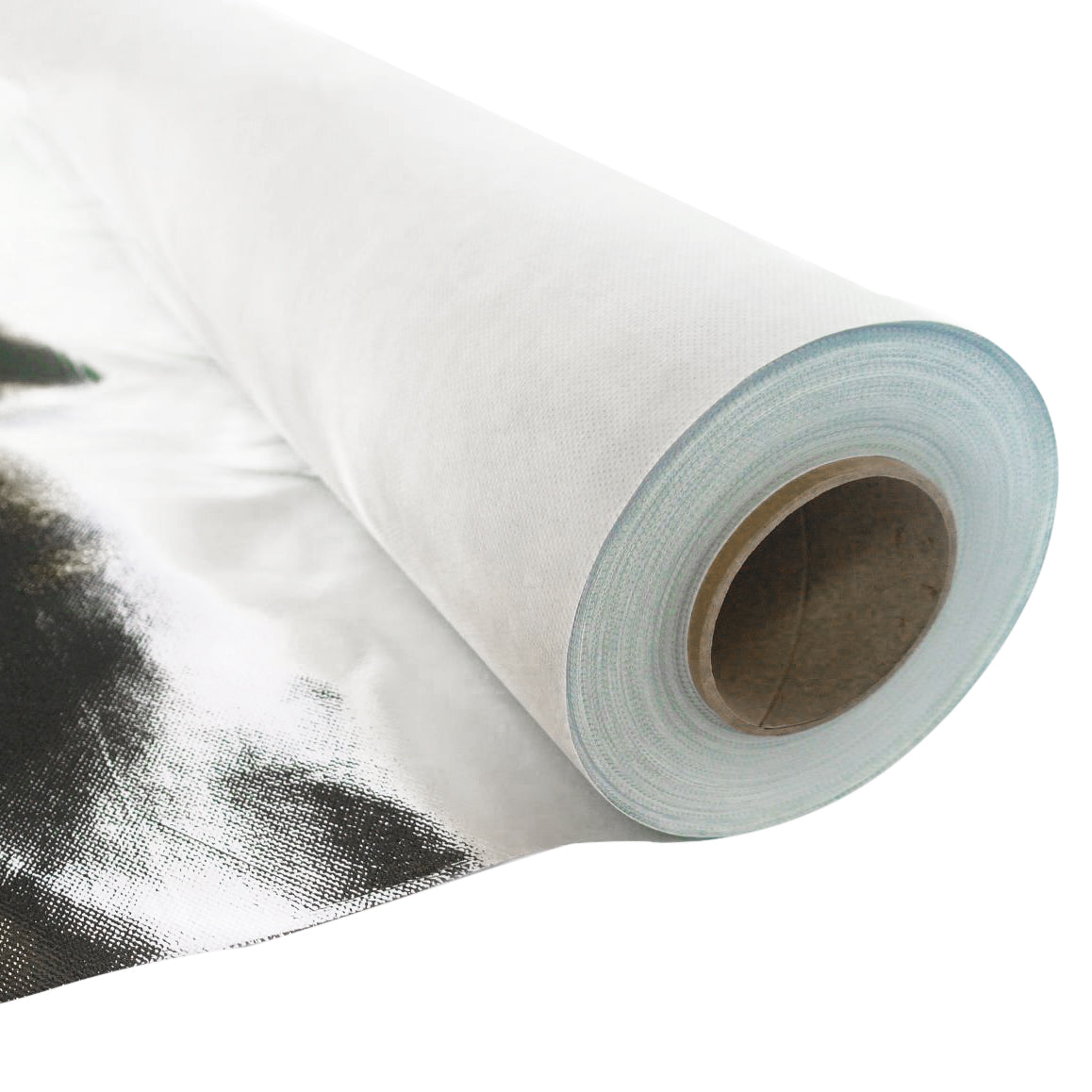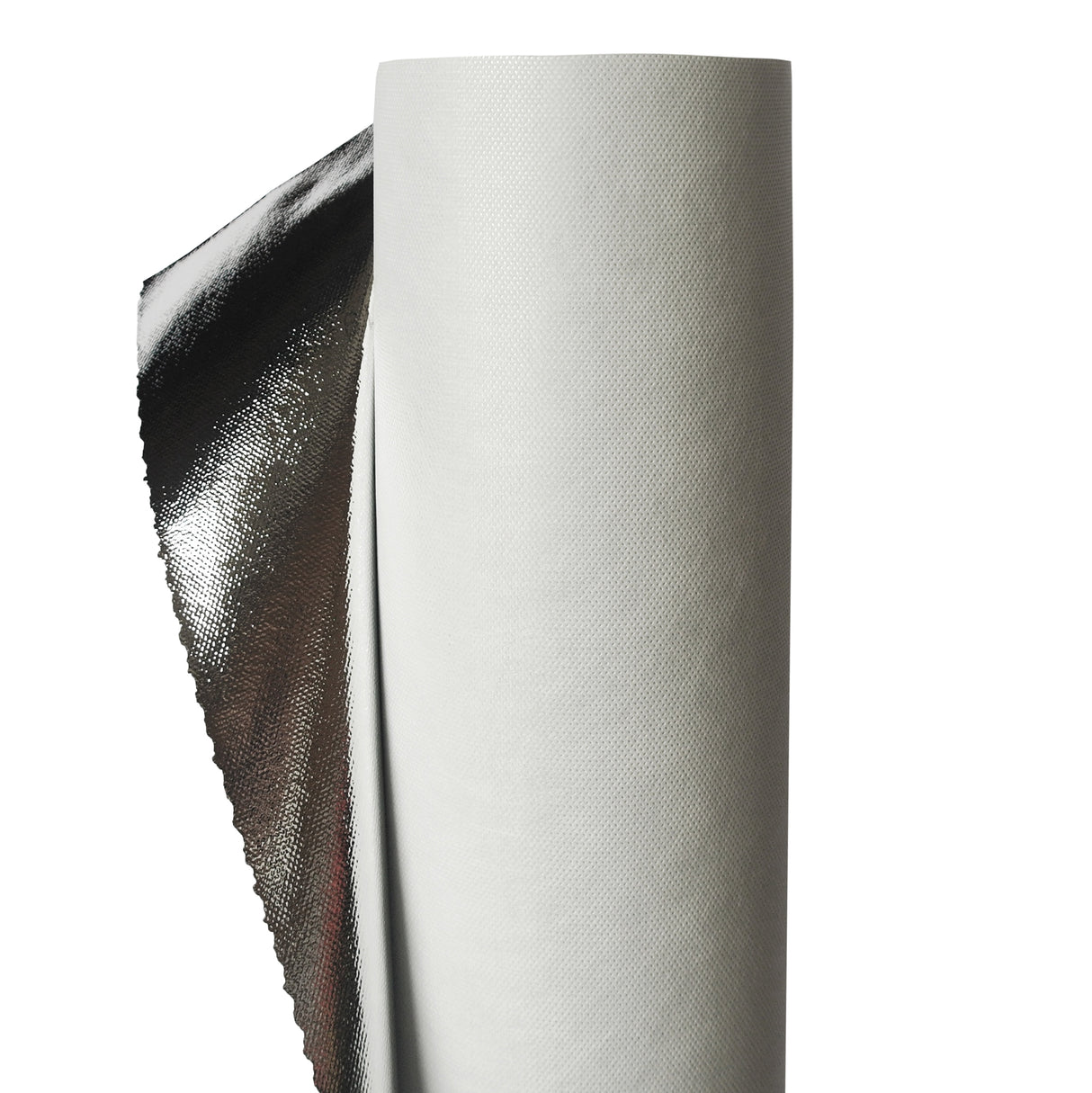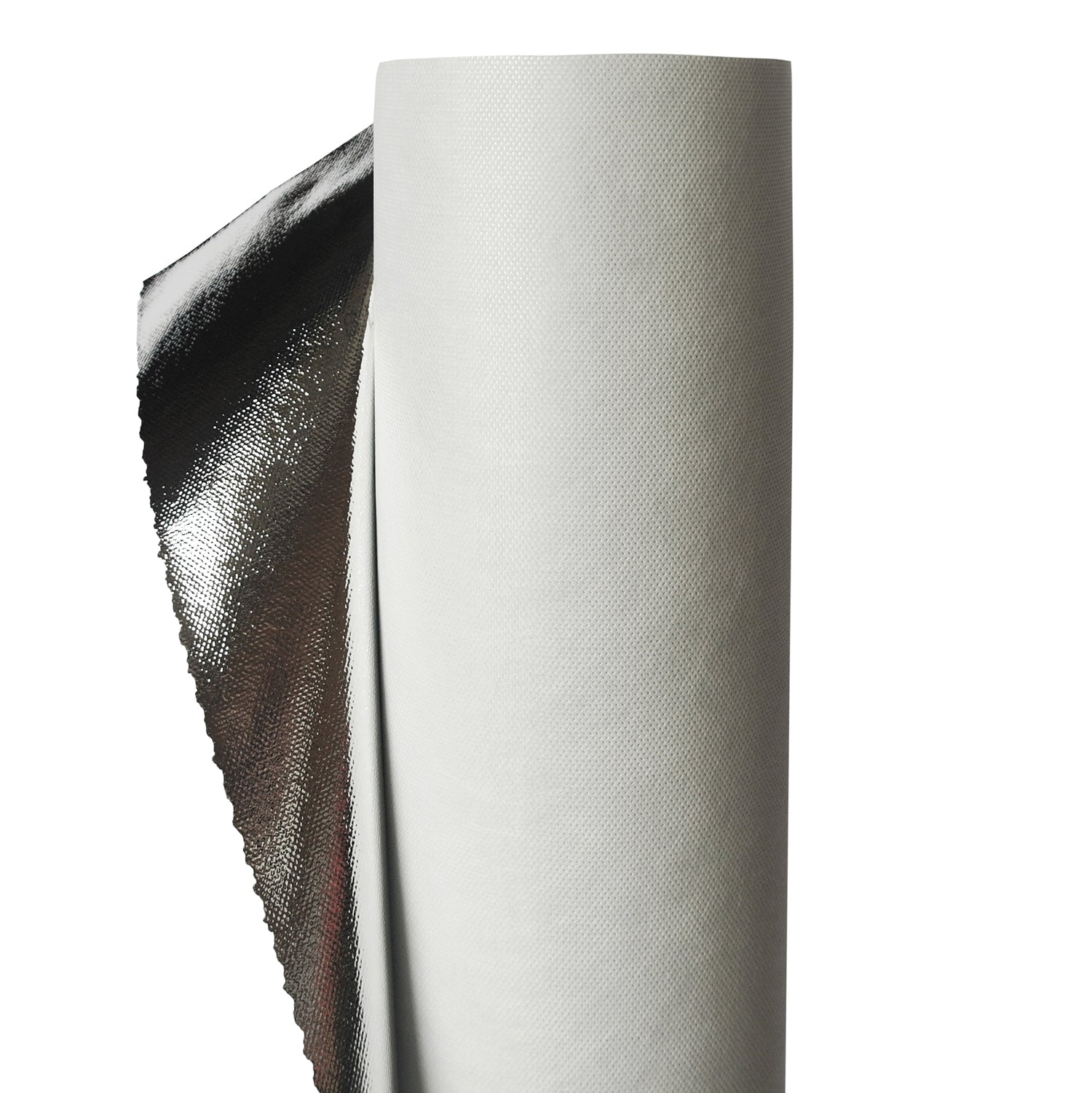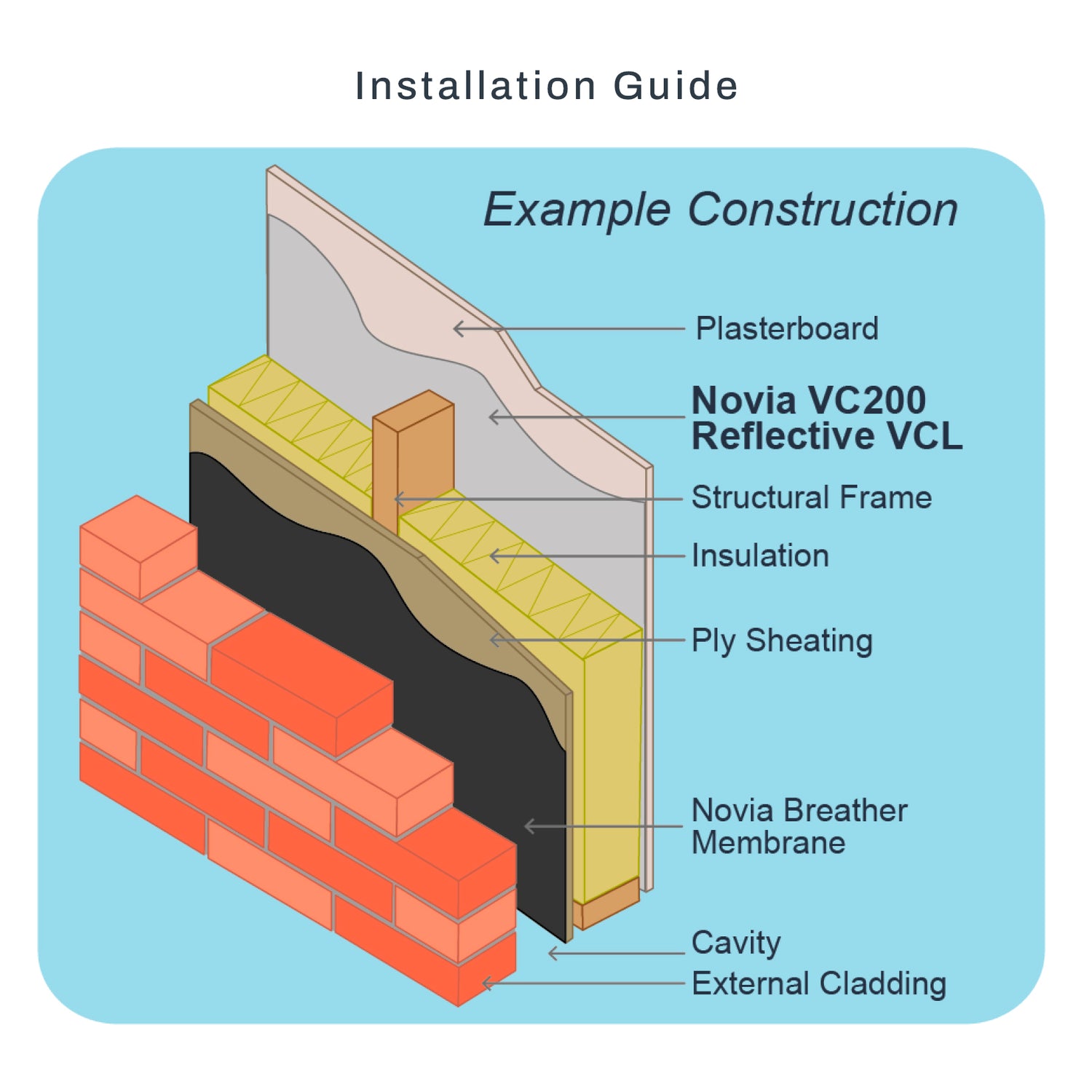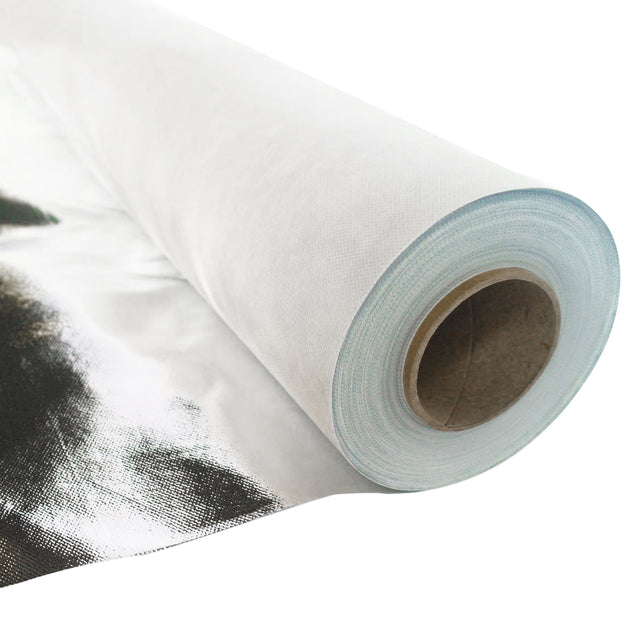Novia VC200 Reflective Air Leakage & Vapour Control Layer 1.5m x 50m - 75m²
Novia VC200 Reflective Air Leakage & Vapour Control Layer 1.5m x 50m - 75m² - 1.5m x 50m is backordered and will ship as soon as it is back in stock.
Novia 200 Reflective is a highly reflective vapour control layer (VCL) designed to help prevent interstitial condensation and improve R and u-values in insulated wall, roof and floor applications. A 25mm cavity is required within the building envelope to benefit from improved R and u-values.
Features flame-resistant additives that mean the membrane will not readily ignite, with a high reflectivity and low emissivity surface. Install on the “warm” (interior) side of your structure and pair with external breather membranes for the “cold” side. Secure with Novia tapes for a secure finish.
- Supplied unfolded, in rolls
- Can deliver improved U values when properly applied
- 1.5m wide
- CE Approved and CPR Compliant
- Complies with BS EN 13984
- Improves insulation performance
| Length: | 50m Roll / 100m Roll |
| Width: | 1.5m / 2.7m |
| Coverage: | 75m² / 270m² |
| Moisture Vapour Permeability in Sd: | 200m |
| Reaction to Fire | E Class |
| Reflectivity | 98% |
Technical Documents
-
Size
-
Quantity Per Pack1
-
Coverage (m²)
-
Thickness
-
Length50m, 100m
-
Width1.5m, 2.7m
-
Material
-
Finish
-
Water Resistance
-
Reaction to Fire
Large Order or Specific Requirement?
CALL OUR TEAM
0115 6976 800

